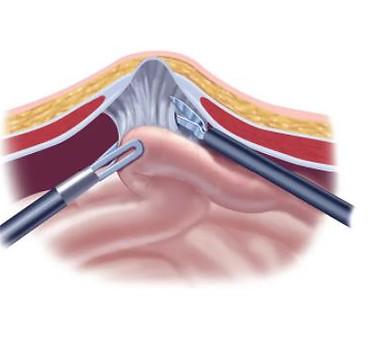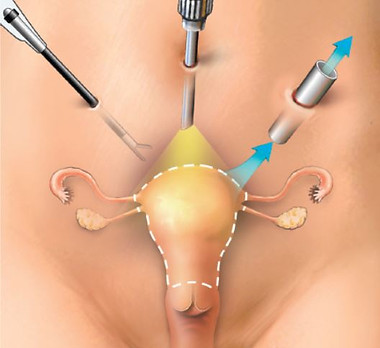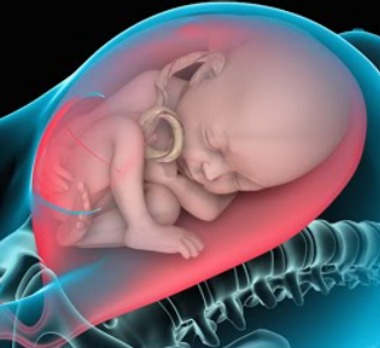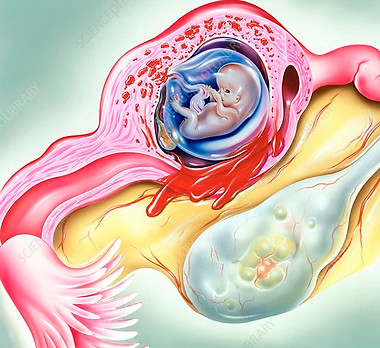Gynecology
Gynecology or gynecology is the medical practice dealing with the health of the female reproductive system. Almost all modern gynecologists are also obstetricians. In many areas, the specialties of gynecology and obstetrics overlap. The term means “the science of women”.

Pap Smear
A Pap smear, also called a Pap test, is a screening procedure for cervical cancer. It tests for the presence of precancerous or cancerous cells on your cervix. The cervix is the opening of the uterus.
Liquid Cytology
Liquid-based cytology is a method of preparing samples for examination in cytopathology. The sample is collected, normally by a small brush, in the same way as for a conventional smear test, but rather than the smear being transferred directly to a microscope slide, the sample is deposited into a small bottle of preservative liquid.


Endometrial Biopsy
An endometrial biopsy is the removal of a small piece of tissue from the endometrium, which is the lining of the uterus. This tissue sample can show cell changes due to abnormal tissues or variations in hormone levels.
D & C | Dilation and Curettage
Dilation and curettage (D&C) is a brief surgical procedure in which the cervix is dilated and a special instrument is used to scrape the uterine lining. Knowing what to expect before, during, and after a D&C may help ease your worries and make the process go more smoothly. Here’s what you need to know.


Diagnostic Dilatation and Curettage
Diagnostic dilation and curettage was originally intended to detect intrauterine endometrial abnormalities and assist in the management of abnormal bleeding. Newer techniques are available to assess the uterine cavity and endometrial findings.
Hysteroscopy
Hysteroscopy is the inspection of the uterine cavity by endoscopy with access through the cervix. It allows for the diagnosis of intrauterine pathology and serves as a method for surgical intervention.


Diagnostic Laparoscopy
Laparoscopy is an operation performed in the abdomen or pelvis using small incisions with the aid of a camera. The laparoscope aids diagnosis or therapeutic interventions with a few small cuts in the abdomen.
Tubectomy
Also called as Tubal Ligation, this surgical procedure is carried out to ensure that the fallopian tubes in your body are blocked-clamped, sealed or severed. The main aim of this surgery is to prevent the sperm from reaching the egg to fertilize it


Vaginal Hysterectomy
Vaginal hysterectomy is a surgical procedure to remove the uterus through the vagina. During a vaginal hysterectomy, the surgeon detaches the uterus from the ovaries, fallopian tubes and upper vagina, as well as from the blood vessels and connective tissue that support it, before removing the uterus.
Laparoscopic Myomectomy
Laparoscopic Myomectomy, also called Robotic Myomectomy is a surgical procedure of removing fibroids through small abdominal incisions. Laparoscopic Myomectomy is suggested and advised for those who experience problems due to fibroids.


Laparoscopic Hysterectomy
A laparoscopic hysterectomy is a minimally invasive surgical procedure to remove the uterus. A small incision is made in the belly button and a tiny camera is inserted. The surgeon watches the image from this camera on a TV screen and performs the operative procedure.
Ovarian Cystectomy
An ovarian cystectomy is surgery to remove a cyst from your ovary. Laparoscopic surgery is a minimally invasive surgery technique that only uses a few small incisions in your lower abdomen.


Normal Delivery
The delivery of a full-term newborn refers to delivery at a gestational age of 37-42 weeks, as determined by the last menstrual period or via ultrasonographic dating and evaluation. The Naegel rule is a commonly used formula to predict the due date based on the date of the last menstrual period. This rule assumes a menstrual cycle of 28 days and mid-cycle ovulation. Ultrasonographic dating can be more accurate, especially when it is performed early in pregnancy and is used to corroborate or modify a due date based on the last menstrual period.
Caesarean Section
Cesarean delivery (C-section) is a surgical procedure used to deliver a baby through incisions in the abdomen and uterus. A C-section might be planned ahead of time if you develop pregnancy complications or you’ve had a previous C-section and aren’t considering a vaginal birth after cesarean.


Treatment of Ectopic Pregnancy
An early ectopic pregnancy without unstable bleeding is most often treated with a medication called methotrexate, which stops cell growth and dissolves existing cells. The medication is given by injection. It’s very important that the diagnosis of ectopic pregnancy is certain before receiving this treatment
